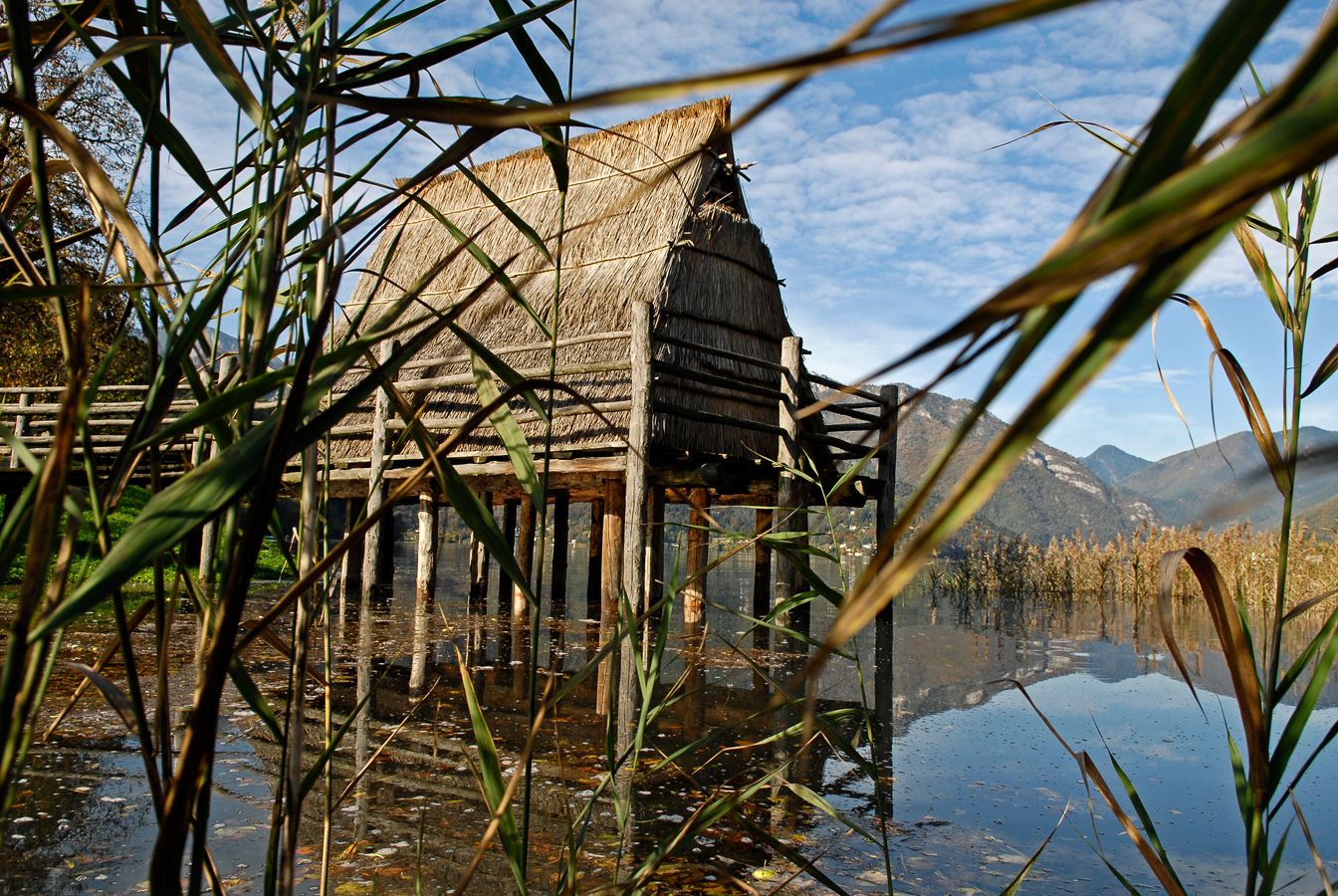Stilt houses on Lake Ledro
Categories: Portable building techniques; Utilization of water and wind power.
Historical context: The stilt houses on Lake Ledro offer a captivating glimpse into ancient dwelling practices, dating back to the Bronze Age. Inhabited since that era, the Ledro Valley houses a significant archaeological site, revealing the enduring presence of human settlements in the region. This historical context unveils the rich tapestry of human life, resourcefulness, and adaptation to the natural environment over thousands of years.
Form – main architectural features: Stilt houses are ingeniously constructed on a wooden platform, supported by sturdy wooden poles fixed along the banks of rivers, lagoons, or swamps. The Ledro Valley boasts two distinctive types: “on reclamation” built on the water’s edge with trunks securing the foundation, and the “Aerial stilt house” elevated on scaffolding above the water surface. The architectural features showcase the artistry of ancient builders in harmonizing with the natural surroundings.
Function: These stilt houses served as ancient dwellings, providing shelter and habitation for communities in the Ledro Valley around 4,000 years ago. The unique construction, with huts made from materials like straw, wood, and reeds, reflects the adaptation to the topography and the utilization of available resources. They were integral to the daily lives of Bronze Age inhabitants, offering protection, proximity to water, and strategic advantages.
Lessons for sustainability: The stilt houses on Lake Ledro resonate with lessons for sustainability, echoing the practices of resourceful ancestors. The construction techniques, using locally sourced materials and adapting to the natural environment, underscore the importance of eco-friendly building practices. The ancient builders unknowingly employed sustainable approaches, emphasizing a harmonious relationship with nature.
Cultural heritage and tourism: Renowned as one of Europe’s significant pile-dwelling sites, the Ledro Valley’s stilt houses are a treasure trove of cultural heritage. Designated a UNESCO World Heritage site in 2012, this archaeological gem attracts visitors from across the globe. The Lake Ledro Pile Dwelling Museum, established in the wake of the discovery, stands as a testament to the region’s commitment to preserving and sharing its rich cultural legacy. The museum provides an immersive experience, showcasing artifacts, tools, and even a remarkably preserved wooden canoe from the Bronze Age.
In essence, the stilt houses on Lake Ledro offer a captivating journey back in time, inviting visitors to connect with the ingenuity of ancient communities and draw inspiration for sustainable living in the present.
Location: Via al Lago, 1, 38067 Ledro TN – Italy
Stilt houses on Lake Ledro – Italy
Sources
Alpine Garda Holiday. (n.d.). Le palafitte della Valle di Ledro. Retrieved January 4, 2024, from www.alpinegardaholiday.it/blog/palafitte-valle-di-ledro/
Palafitte Ledro. (n.d.). La historia del museo. Retrieved January 4, 2024, from https://www.palafitteledro.it/museo/la-storia-del-museo/


